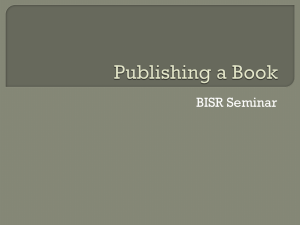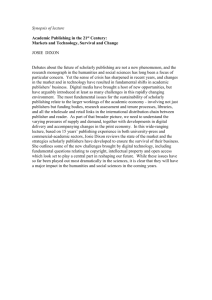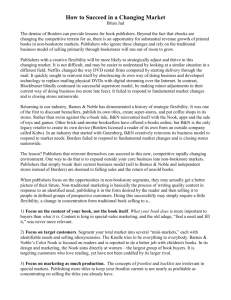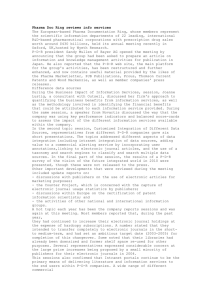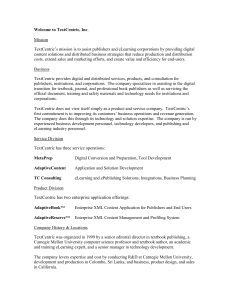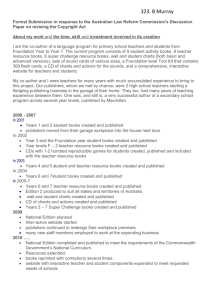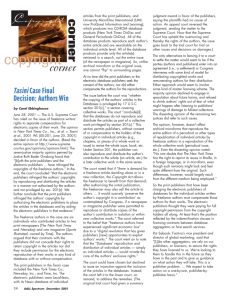10 Awful Truths about Book Publishing
advertisement
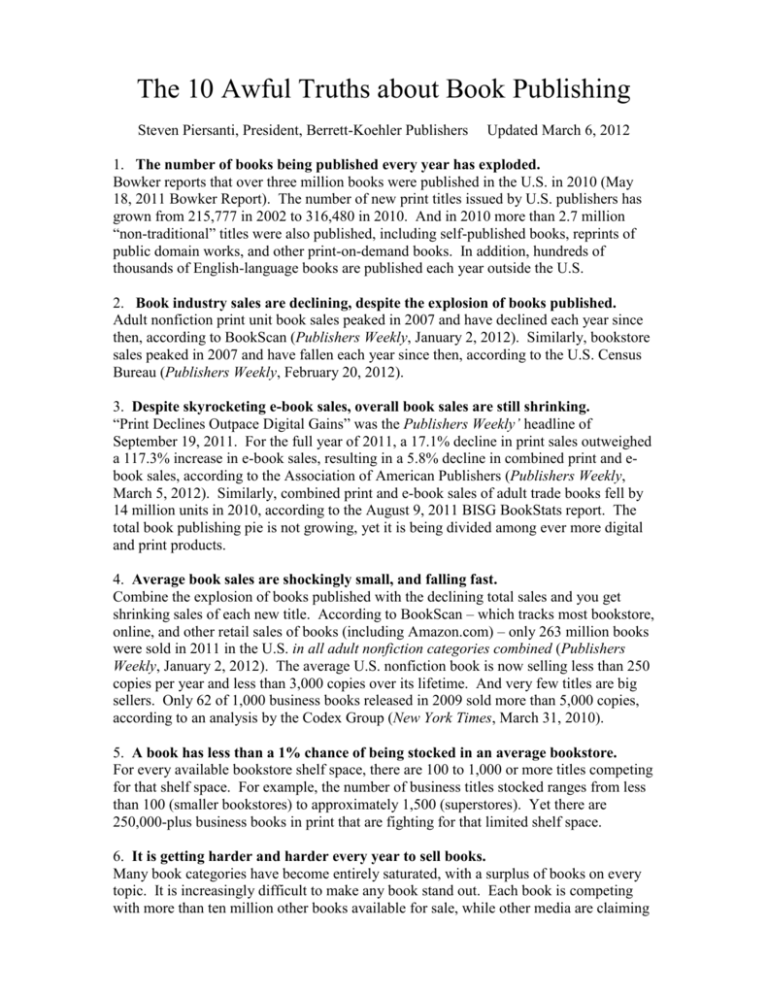
The 10 Awful Truths about Book Publishing Steven Piersanti, President, Berrett-Koehler Publishers Updated March 6, 2012 1. The number of books being published every year has exploded. Bowker reports that over three million books were published in the U.S. in 2010 (May 18, 2011 Bowker Report). The number of new print titles issued by U.S. publishers has grown from 215,777 in 2002 to 316,480 in 2010. And in 2010 more than 2.7 million “non-traditional” titles were also published, including self-published books, reprints of public domain works, and other print-on-demand books. In addition, hundreds of thousands of English-language books are published each year outside the U.S. 2. Book industry sales are declining, despite the explosion of books published. Adult nonfiction print unit book sales peaked in 2007 and have declined each year since then, according to BookScan (Publishers Weekly, January 2, 2012). Similarly, bookstore sales peaked in 2007 and have fallen each year since then, according to the U.S. Census Bureau (Publishers Weekly, February 20, 2012). 3. Despite skyrocketing e-book sales, overall book sales are still shrinking. “Print Declines Outpace Digital Gains” was the Publishers Weekly’ headline of September 19, 2011. For the full year of 2011, a 17.1% decline in print sales outweighed a 117.3% increase in e-book sales, resulting in a 5.8% decline in combined print and ebook sales, according to the Association of American Publishers (Publishers Weekly, March 5, 2012). Similarly, combined print and e-book sales of adult trade books fell by 14 million units in 2010, according to the August 9, 2011 BISG BookStats report. The total book publishing pie is not growing, yet it is being divided among ever more digital and print products. 4. Average book sales are shockingly small, and falling fast. Combine the explosion of books published with the declining total sales and you get shrinking sales of each new title. According to BookScan – which tracks most bookstore, online, and other retail sales of books (including Amazon.com) – only 263 million books were sold in 2011 in the U.S. in all adult nonfiction categories combined (Publishers Weekly, January 2, 2012). The average U.S. nonfiction book is now selling less than 250 copies per year and less than 3,000 copies over its lifetime. And very few titles are big sellers. Only 62 of 1,000 business books released in 2009 sold more than 5,000 copies, according to an analysis by the Codex Group (New York Times, March 31, 2010). 5. A book has less than a 1% chance of being stocked in an average bookstore. For every available bookstore shelf space, there are 100 to 1,000 or more titles competing for that shelf space. For example, the number of business titles stocked ranges from less than 100 (smaller bookstores) to approximately 1,500 (superstores). Yet there are 250,000-plus business books in print that are fighting for that limited shelf space. 6. It is getting harder and harder every year to sell books. Many book categories have become entirely saturated, with a surplus of books on every topic. It is increasingly difficult to make any book stand out. Each book is competing with more than ten million other books available for sale, while other media are claiming more and more of people’s time. Result: investing the same amount today to market a book as was invested a few years ago will yield a far smaller sales return today. 7. Most books today are selling only to the authors’ and publishers’ communities. Everyone in the potential audiences for a book already knows of hundreds of interesting and useful books to read but has little time to read any. Therefore people are reading only books that their communities make important or even mandatory to read. There is no general audience for most nonfiction books, and chasing after such a mirage is usually far less effective than connecting with one’s communities. 8. Most book marketing today is done by authors, not by publishers. Publishers have managed to stay afloat in this worsening marketplace only by shifting more and more marketing responsibility to authors, to cut costs and prop up sales. In recognition of this reality, most book proposals from experienced authors now have an extensive (usually many pages) section on the authors’ marketing platform and what the authors will do to publicize and market the books. Publishers still fulfill important roles in helping craft books to succeed and making books available in sales channels, but whether the books move in those channels depends primarily on the authors. 9. No other industry has so many new product introductions. Every new book is a new product, needing to be acquired, developed, reworked, designed, produced, named, manufactured, packaged, priced, introduced, marketed, warehoused, and sold. Yet the average new book generates only $50,000 to $200,000 in sales, which needs to cover all of these expenses, leaving only small amounts available for each area of expense. This more than anything limits how much publishers can invest in any one new book and in its marketing campaign. 10. The book publishing world is in a never-ending state of turmoil. The thin margins in the industry, high complexities of the business, intense competition, churning of new technologies, and rapid growth of other media lead to constant turmoil in bookselling and publishing (such as the bankruptcy of Borders and many other stores). Translation: expect even more changes and challenges in coming months and years. STRATEGIES FOR RESPONDING TO “THE 10 AWFUL TRUTHS” 1. The game is now pass-along sales. 2. Events/immersion experiences replace traditional publicity in moving the needle. 3. Leverage the authors’ and publishers’ communities. 4. In a crowded market, brands stand out. 5. Master new digital channels for sales, marketing, and community building. 6. Build books around a big new idea. 7. Front-load the main ideas in books and keep books short.



